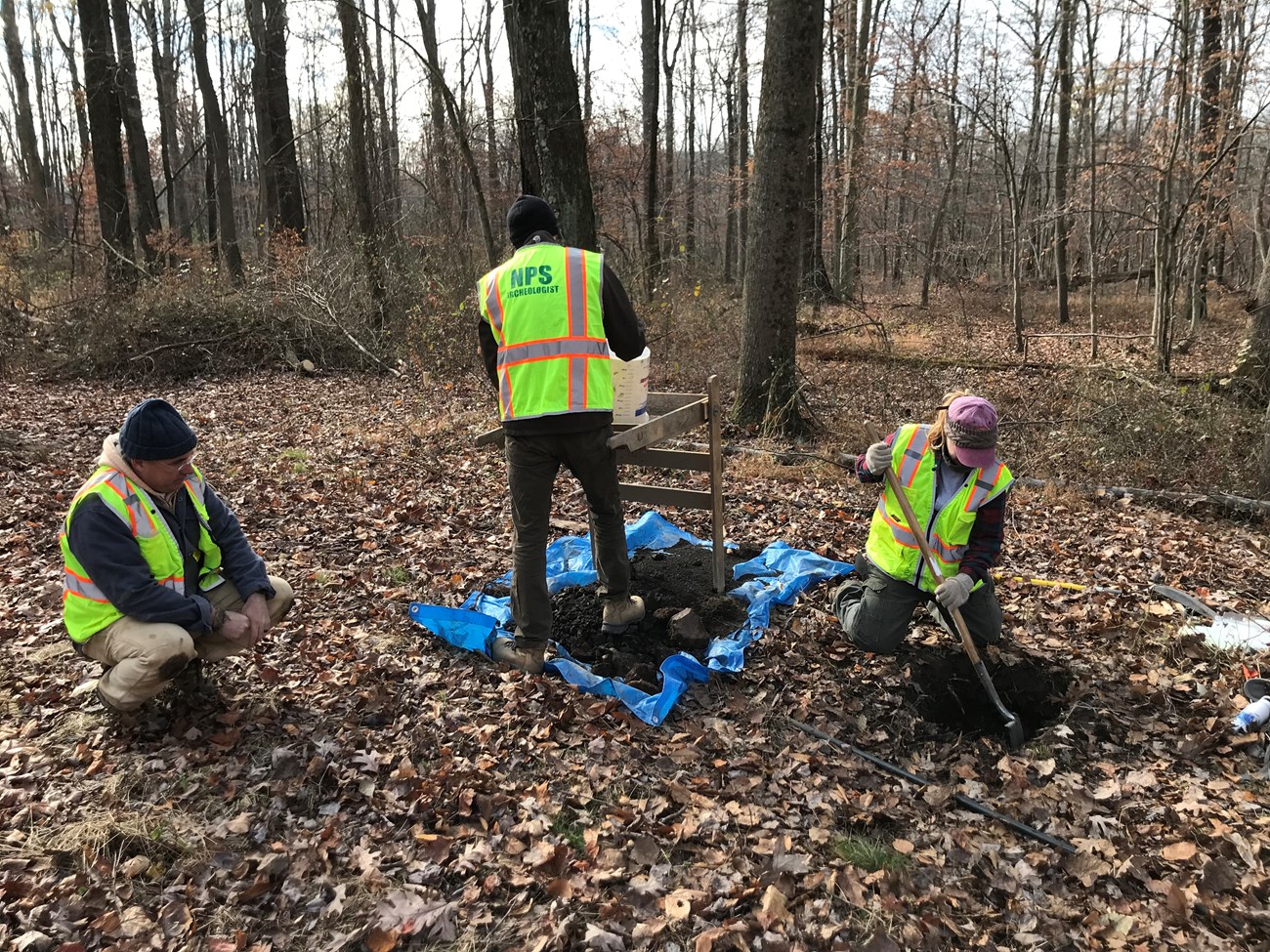Last updated: January 8, 2021
Article
Archeology of African American Landscapes at Hopewell Furnace National Historic Site

Northeast Archeological Resources Program, National Park Service
2019-2021
Hopewell Furnace National Historic Site (NHS) is the site of a cold-blast, charcoal-fueled iron furnace which operated from 1771 to 1883. The park today contains both the main furnace buildings themselves, as well as the house of the ironmaster and owner of the furnace, several tenant houses, and much of the surrounding land that was used to supply farm goods and charcoal for the furnace operation. Both free and enslaved African Americans lived and worked at the furnace throughout its operation, and a small free Black community was founded next door along Six Penny Creek.
As a part of the NPS’s responsibility to identify and protect archeological resources within park lands, this project will survey several tenant houses within Hopewell Furnace NHS that were occupied by African Americans during the operation of the Furnace. Our work seeks to identify, document, and analyze artifacts, features, and other archeological evidence that can tell us about the lives of African Americans at Hopewell Furnace in the past. This project also provides an opportunity to revisit and add to what is known about the lives of African American people at the furnace and use archeology to more fully understand and share their story.
One phase of archeological fieldwork was completed in November of 2019, with a second delayed by COVID-19 but now scheduled for spring of 2021. In addition to basic information about what artifacts and other archeological data is present at these sites, the project also seeks to address the following questions about the African American experience at Hopewell Furnace.
-
What can archeological evidence, largely from artifacts uncovered through excavation, tell us about the lives of African Americans at Hopewell Furnace?
-
What strategies did African Americans pursue to construct, express, and maintain their identities at Hopewell Furnace?
-
How does the furnace site compare to agricultural plantation sites? Do previous experiences on plantations impact how free African Americans interact with Hopewell Furnace?
-
How can we understand the African American sites/landscapes at Hopewell Furnace and how they are impacted by both Underground Railroad involvement and evolving forms of racial inequality after the abolition of slavery in Pennsylvania?
Planning for fieldwork and project components for 2021 are ongoing. In addition to excavation and archeological research, we hope to also provide significant opportunities for local communities to engage with, become involved in, and have input into the project and research goals.
Anyone interested in learning more about the project can contact archeologists Jared Muehlbauer e-mail us or Amy Fedchenko e-mail us with the Northeast Archeological Resources Program of the NPS.
